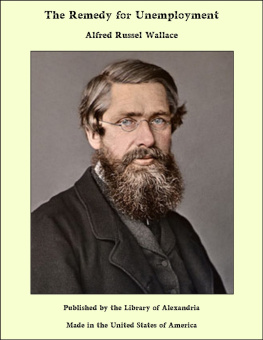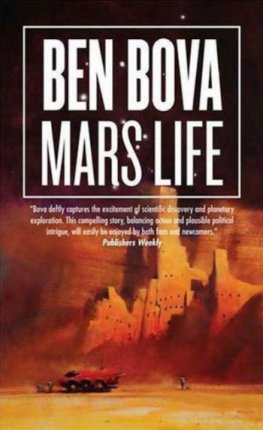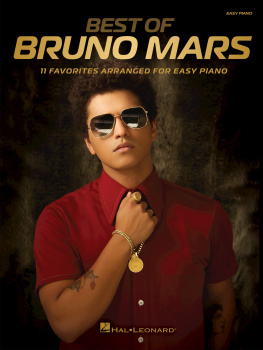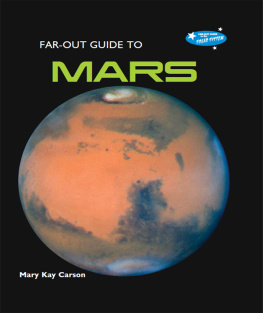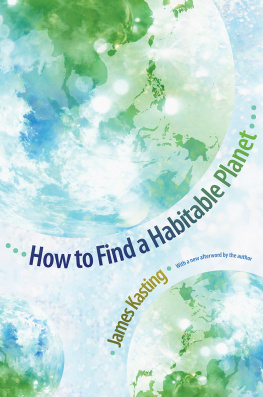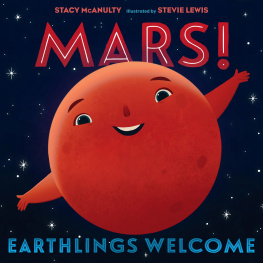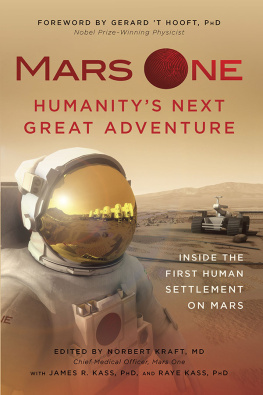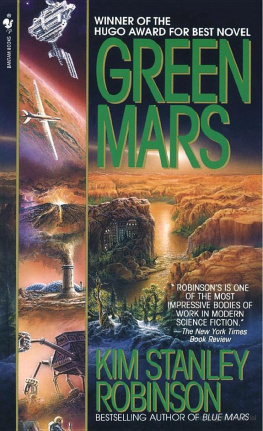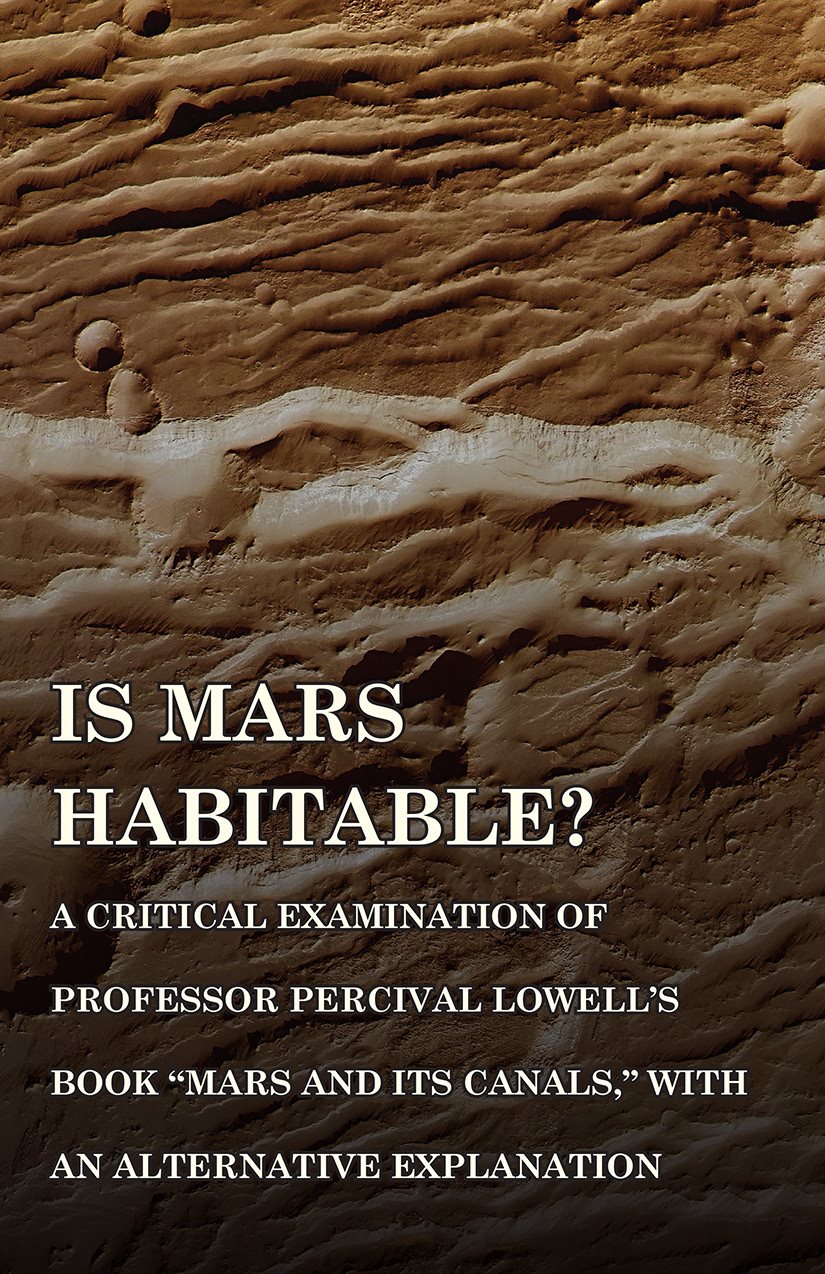Is Mars Habitable?
BY
Alfred Russel Wallace
Copyright 2016 Read Books Ltd.
This book is copyright and may not be
reproduced or copied in any way without
the express permission of the publisher in writing
British Library Cataloguing-in-Publication Data
A catalogue record for this book is available from the British Library
Contents
Alfred Russel Wallace
Alfred Russel Wallace was born on 8th January 1823 in the village of Llanbadoc, in Monmouthshire, Wales.
At the age of five, Wallaces family moved to Hertford where he later enrolled at Hertford Grammar School. He was educated there until financial difficulties forced his family to withdraw him in 1836. He then boarded with his older brother John before becoming an apprentice to his eldest brother, William, a surveyor. He worked for William for six years until the business declined due to difficult economic conditions.
After a brief period of unemployment, he was hired as a master at the Collegiate School in Leicester to teach drawing, map-making, and surveying. During this time he met the entomologist Henry Bates who inspired Wallace to begin collecting insects. He and bates continued exchanging letters after Wallace left teaching to pursue his surveying career. They corresponded on prominent works of the time such as Charles Darwins The Voyage of the Beagle (1839) and Robert Chambers Vestiges of the Natural History of Creation (1844).
Wallace was inspired by the travelling naturalists of the day and decided to begin his exploration career collecting specimens in the Amazon rainforest. He explored the Rio Negra for four years, making notes on the peoples and languages he encountered as well as the geography, flora, and fauna. On his return voyage his ship, Helen, caught fire and he and the crew were stranded for ten days before being picked up by the Jordeson, a brig travelling from Cuba to London. All of his specimens aboard Helen had been lost.
After a brief stay in England he embarked on a journey to the Malay Archipelago (now Singapore, Malaysia, and Indonesia). During this eight year period he collected more than 126,000 specimens, several thousand of which represented new species to science. While travelling, Wallace refined his thoughts about evolution and in 1858 he outlined his theory of natural selection in an article he sent to Charles Darwin. This was published in the same year along with Darwins own theory. Wallace eventually published an account of his travels The Malay Archipelago in 1869, and it became one of the most popular books of scientific exploration in the 19th century.
Upon his return to England, in 1862, Wallace became a staunch defender of Darwins landmark work On the Origin of Species (1859). He wrote responses to those critical of the theory of natural selection, including Remarks on the Rev. S. Haughtons Paper on the Bees Cell, And on the Origin of Species (1863) and Creation by Law (1867). The former of these was particularly pleasing to Darwin. Wallace also published important papers such as The Origin of Human Races and the Antiquity of Man Deduced from the Theory of Natural Selection (1864) and books, including the much cited Darwinism (1889).
Wallace made a huge contribution to the natural sciences and he will continue to be remembered as one of the key figures in the development of evolutionary theory.
Wallace died on 7th November 1913 at the age of 90. He is buried in a small cemetery at Broadstone, Dorset, England.
PREFACE.
This small volume was commenced as a review article on Professor Percival Lowells book, Mars and its Canals , with the object of showing that the large amount of new and interesting facts contained in this work did not invalidate the conclusion I had reached in 1902, and stated in my book on Mans Place in the Universe , that Mars was not habitable.
But the more complete presentation of the opposite view in the volume now under discussion required a more detailed examination of the various physical problems involved, and as the subject is one of great, popular, as well as scientific interest, I determined to undertake the task.
This was rendered the more necessary by the fact that in July last Professor Lowell published in the Philosophical Magazine an elaborate mathematical article claiming to demonstrate that, notwithstanding its much greater distance from the sun and its excessively thin atmosphere, Mars possessed a climate on the average equal to that of the south of England, and in its polar and sub-polar regions even less severe than that of the earth. Such a contention of course required to be dealt with, and led me to collect information bearing upon temperature in all its aspects, and so enlarging my criticism that I saw it would be necessary to issue it in book form.
Two of my mathematical friends have pointed out the chief omission which vitiates Professor Lowells mathematical conclusionsthat of a failure to recognise the very large conservative and cumulative effect of a dense atmosphere. This very point however I had already myself discussed in Chapter VI., and by means of some remarkable researches on the heat of the moon and an investigation of the causes of its very low temperature, I have, I think, demonstrated the incorrectness of Mr. Lowells results. In my last chapter, in which I briefly summarise the whole argument, I have further strengthened the case for very severe cold in Mars, by adducing the rapid lowering of temperature universally caused by diminution of atmospheric pressure, as manifested in the well-known phenomenon of temperate climates at moderate heights even close to the equator, cold climates at greater heights even on extensive plateaux, culminating in arctic climates and perpetual snow at heights where the air is still far denser than it is on the surface of Mars. This argument itself is, in my opinion, conclusive; but it is enforced by two others equally complete, neither of which is adequately met by Mr. Lowell.
The careful examination which I have been led to give to the whole of the phenomena which Mars presents, and especially to the discoveries of Mr. Lowell, has led me to what I hope will be considered a satisfactory physical explanation of them. This explanation, which occupies the whole of my seventh chapter, is founded upon a special mode of origin for Mars, derived from the Meteoritic Hypothesis, now very widely adopted by astronomers and physicists. Then, by a comparison with certain well-known and widely spread geological phenomena, I show how the great features of Marsthe canals and oasesmay have been caused. This chapter will perhaps be the most interesting to the general reader, as furnishing a quite natural explanation of features of the planet which have been termed non-natural by Mr. Lowell.
Incidentally, also, I have been led to an explanation of the highly volcanic nature of the moons surface. This seems to me absolutely to require some such origin as Sir George Darwin has given it, and thus furnishes corroborative proof of the accuracy of the hypothesis that our moon has had an unique origin among the known satellites, in having been thrown off from the earth itself.
I am indebted to Professor J. H. Poynting, of the University of Birmingham, for valuable suggestions on some of the more difficult points of mathematical physics here discussed, and also for the critical note (at the end of Chapter V.) on Professor Lowells estimate of the temperature of Mars.
BROADSTONE, DORSET, October 1907.


